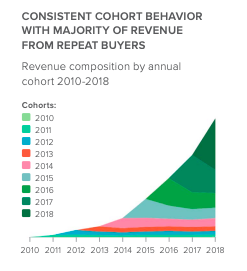Fiverr – Talent Without Borders

The platform that allows freelancers across the globe to offer everything from Digital Marketing to App Development to Gaming to Astrology
I first encountered Fiverr when I needed to design a logo for a side project I was working on. After trying to design a logo myself on Canva and failing, I decided to look on Fiverr. I found a seller who replied me in less than an hour and sent the final logo to me in a few days. The process was seamless and stress-free.
I noticed that graphic design was one of many talents available on Fiverr. Freelancers across the world use the platform to offer everything from Digital Marketing to App Development to Gaming to Astrology. Freelancers are no longer limited by geography and can compete for business on a global scale. This is especially important in the era of remote work where geography does not have to limit talent pools. Fiverr views itself as a “Service-as-a-Product” platform that provides valuable services for both freelancers (sellers) and businesses/individuals(sellers).
From the freelancers’ standpoint, the obvious benefit is being able to provide services globally and the availability of a deep client pool that can be tapped. This global feature is especially important for freelancers in developing countries with unstable currencies. The ability to get paid in USD is one that may not be appreciated in developed countries, but in countries with high inflation and volatile currencies, this access to dollar-denominated income is key. Setting up payment infrastructure is also usually a pain-point for small businesses and freelancers. Fiverr’s seamless payment infrastructure allows freelancers to instantly receive money in their bank accounts and avoid the hassle of chasing clients for payments.
Fiverr also provides exposure for sellers. There is a “rising talent” section that features up and coming talent in various fields. These sellers are given prime real estate on the Fiverr page and are more likely to receive inbounds from potentially clients. Other forms of tiered exposure include a badge system where Top Rated Sellers (TRS) are selected by Fiverr moderators based on a pre-defined list of criteria.

From the business / individual’s standpoint, Fiverr provides an intuitive UX that allows buyers to easy search for and communicate with sellers with the relevant skill set. The global nature of the platform means the buyers get to access a wide talent pool and potentially more competitive prices. Furthermore, buyers have the comfort of knowing that sellers are vetted and if a seller provides subpar service, Fiverr can offer a refund. This de-risks the transaction substantially and helps build trust on the platform.

As a pure marketplace, Fiverr is an extremely scalable platform. It collects ~20% of each transaction from the seller and apart from ongoing capital investments in infrastructure to support increases in scale, I expect that the platform requires little ongoing maintenance expenditures. The COVID-19 pandemic accelerated people’s desire to be in control of their own schedules and work as much or as little as they please. This “shift” in the way people think about work is a tailwind for Fiverr and I think the company is well positioned to capitalize on the momentum.
A long-term concern that I have that I do have with the business model is that it is not particularly sticky like some of the other business models we have explored in class (e.g. the simulation). There are many alternative websites (Upwork, Solidgigs, etc.) that sellers can easily use in lieu of Fiverr. Sellers are naturally sensitive to commission fees that platforms take and with little differentiation between platforms and low switching costs, there is no reason why sellers cannot move to various platforms and take their clients with them. Fiverr in particularly seems to be geared more towards one-time jobs whereas platforms like Upwork are for longer, on-going projects. This lowers the stickiness of Fiverr’s platform in general as sellers are not building a long-term relationship with buyers. However, internal data from Fiverr shows that majority of buyers are repeat buyers which goes to show that despite the lack of “structural stickiness”, buyers continue to choose Fiverr.

Overall, Fiverr is a great business model and has the tailwinds of pivotal changes in society with regards to how we view work. The model benefits from a flywheel effect on both the buyer and seller ends.




Super interesting article! I’ve never used Fiverr, but I’ve always wondered about how it defends against disintermediation (i.e., the “switching costs” you outline above). It could anonymize users and gig workers, ensuring they could only exchange messages via the platform, but that friction would likely push users elsewhere. Do you think there are any complementary services it could offer that would make the platform stickier?
Thanks for the post, Sultana. This platform is an interesting comparison point to ZBJ. I wonder if they have found anyways to expand their service offerings the way that ZBJ has. Although it seems that they do not have as significant of a disintermediation problem given the one-off nature of the jobs. Your point about platform stickiness is well taken. I’m curious if this platform provides sellers with enough work for it to be their primary source of income? If not, how do they ensure an actively engaged pool of sellers?
Thanks for this post Saltana! I am a Fiverr user and I think it’s a wonderful example of how a platform could match supply with demand and reduce frictions in the talent market. I agree with your concern about the lack of stickiness, as many competitors exist in this space and both consumers and freelancers and multihome. Fiverr’s differentiation strategy isn’t particularly clear to me (maybe it focuses more on design and artistic industries?) I’m also curious to know whether Fiverr applies filters on customer reviews, given the importance of those reviews in signalizing a seller/customer’s quality.
Super interesting post! I’m wondering why this company thought their value prop could be given how many other companies operate in the same space (as you mentioned). What platform do you think is actually going to win out in this freelancing platform market? Thanks for introducing us to a new platform!
I agree, Fiverr is definitely an interesting comparison to ZBJ. Building on Nitya’s comment, I wonder if they continue to charge the 20% commission on transactions because of their low disintermediation. From what I remember, that’s what led ZBJ to do away with their commission. It would be curious to see what plans they have, if any, to expand their service offerings. It seems like there could be a lot of room for them to pivot their business model in the manner that ZBJ did. Thank you for the post Sultana!